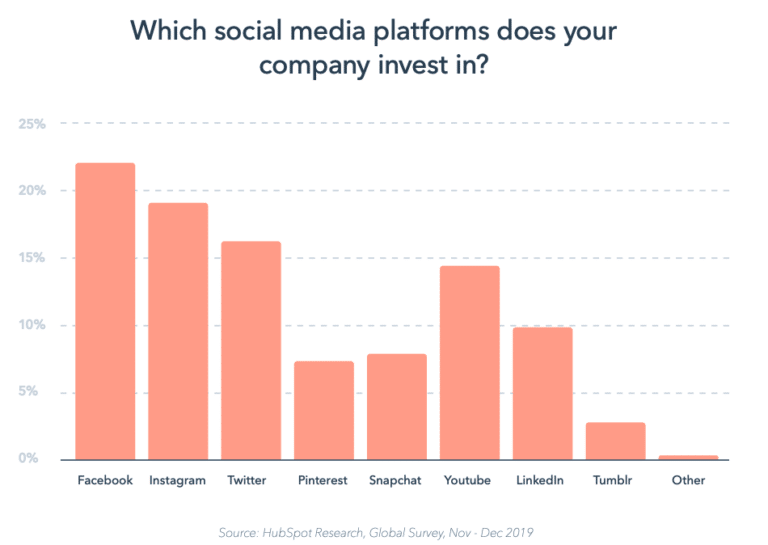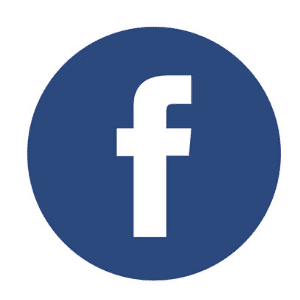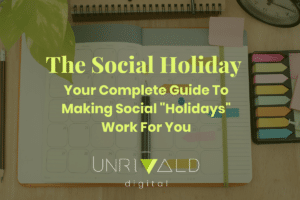Your business should be on social media.
We’ve all heard it before, but it’s kind of like saying ‘you should get healthy’. What does that even mean? Do you want to run a marathon, or just start taking walks around the block? Do you want to target every penny you spend to hyper-specific audiences on their preferred platform, or do you just need to post to your Instagram account more often than annually?
Not knowing where to start is where many businesses might throw up their hands and say “I don’t have time to learn how to do this – I’m busy running my business”. Of course, there are companies out there that would be happy to do this work for you (like us!), but YOU know your product or service best! Who else could talk about your culture, your values, and your unique selling points? If you DO want to try it yourself, here are some helpful tips to point you in the right direction.
Market research
If you’re totally unsure about where to start, do a quick analysis of your competitors.
- What platforms are they on?
- Who do they appear to be advertising to?
- What approaches are they using?
- What is their call to action?

After you’ve done this research, decide where you want to focus your efforts, and how you want to stand out from your competitors. Be realistic about what you want to achieve (we’re not stealing 60% of Nike’s market share here), and track your progress so you can know if your efforts are successful.
Where is your audience?

This is a solid platform to start with. 74% of users visit daily (or more frequently), which gives Facebook the highest loyalty among social media platforms.
Who uses it:
The majority of users are between 18 and 50, with the bulk being over the age of 25. You won’t see many teenage users on this platform; they are trending toward more youthful platforms like YouTube, Instagram and Snapchat.
Since users are a little older, this means they will (on average) be more educated, and have a slightly higher income, which means stronger buying power. If you have a product or service that falls at a slightly higher price point, this is the platform to reach your market on. Also, since this demographic spends time here, the opportunity exists for them to see and engage with your brand repeatedly, creating those warm fuzzy feelings of trust.
Why they use it:
Facebook users share images, links, websites, events, videos, live streams. They join groups, connect with family and friends, and follow brands they identify with. Of particular interest for businesses is that this platform is becoming its own Google – business pages can post products, contact information, calls to action, and more, while consumers can post reviews and easily share and mention the business page in their own posts.
How to reach them:
Facebook has made it really easy for businesses and consumers to interact organically or through paid advertising, and users tend to accept this as a normal part of the platform.

Who uses it:
The Instagram demographic is largely 13-29 with a slight majority between 13-17. Mostly female, and mostly from urban areas. The number of new users in this age group is increasing, which makes Instagram a good choice if that’s the market you’re looking to get in front of.
Why they use it:
Because of the visual nature of this platform, users carefully craft photos and stories to share their lives, interests, and stories. Instagram users can also find themselves spending hours scrolling and discovering new accounts through hashtags. For businesses that use Instagram, this is where your consumers shop and compare. Many users follow influencers (trusted mini or mega-celebrities) who recommend brands through sponsored posts.
How to reach them:
Including relevant hashtags is an easy way to reach people who are searching for those terms. Make it easy for them to engage with your brand by taking advantage of Instagram stories which will automatically appear at the top of your followers feeds.
Also, because of the visual aspect, put your best foot forward by investing in or learning about effective product or lifestyle photography. If you have the budget, consider hiring an influencer who has a following that matches your target market demographics and values.

Who uses it:
Mosty twitter users are aged 18-29, mostly in urban and suburban areas. This market is fairly well educated and likely to engage.
Why they use it:
This platform is about quick engagement. They’re looking for news, opinions, and information in 240 characters or less. They follow people and products that interest them. Twitter can be the most conversational of these platforms, so users are expecting engagement from the accounts they follow.
How to reach them:
Engage with them! Do your social listening, and participate in threads that align with your brand. This isn’t so much for selling, but for brand awareness and reputation-building. Hashtags help, but don’t be fooled: the demographic isn’t here to shop. They’re here to engage and learn about you.
Snapchat

Who uses it:
With 210 million users active daily on the app, Snapchat is where you’ll reach your teenage market. Statista reports that Snapchat is the most important app for 41% of teenagers, with the vast majority of users are in the 13-17 age bracket, and the next largest group of users being 18-29.
Why they use it:
It’s easy, it’s fleeting (posts disappear after 24 hours), and there are no likes or comments so the social pressure is much less than other apps. Also, their parents aren’t on it.
How to reach them:
Paid advertising is available on Snapchat, but if you’re just learning the platform, definitely do your research first about HOW to engage with this market in an authentic way. This market will be incredibly loyal to brands who share their values, but will quickly reject brands who they deem ‘cringey’.
Final thoughts
Of course, if reading this makes you feel like you’d rather brush your teeth with a brillo-pad, you can always reach out to a professional. Unrivald Digital offers a number of solutions, and can design a strategy and an execution plan to get your business in front of the right people at the right in the right way.








